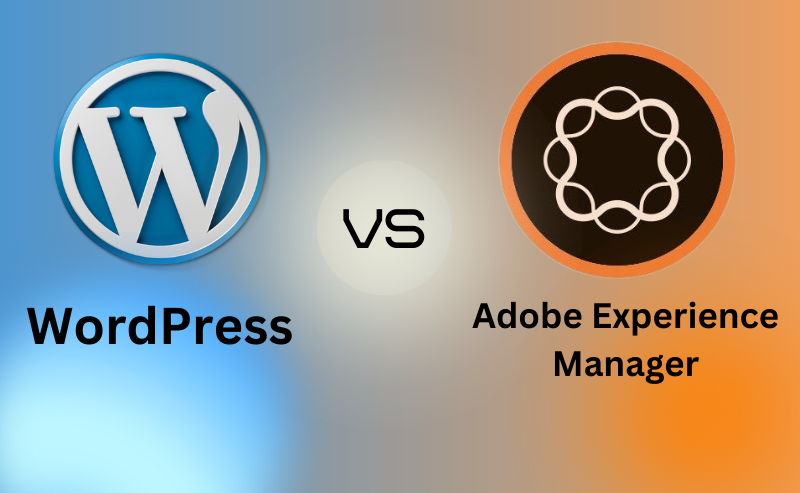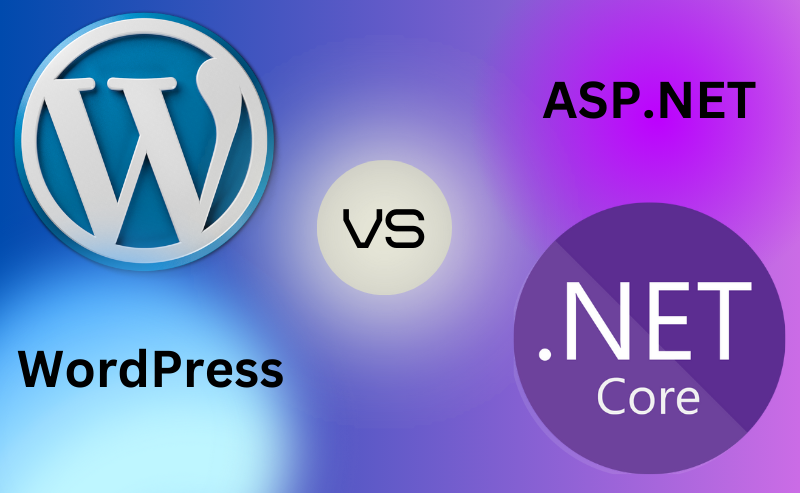Adobe Experience Manager vs WordPress: Choosing the right content management system (CMS) for your website begins with understanding how they differ.
Adobe Experience Manager provides advanced features and extensive scalability options for large organizations. WordPress, on the other hand, offers a simple and user-friendly interface, making it an excellent choice for those just starting out in the world of blogging.
When it comes to user interfaces, AEM can be more complex than WordPress. AEM also requires expensive licensing fees, while WordPress is free. Both platforms provide scalability and customization options, but AEM comes with more advanced features.
Both AEM and WordPress offer basic SEO features. WordPress, however, may have an advantage because of its large community and availability of SEO plugins. You should carefully evaluate your business’ needs and resources before making a decision between AEM and WordPress.
If you are seeking a reliable hosting solution for your website, consider providers such as A2 Hosting and Bluehost, which are compatible with both AEM and WordPress. If you take these factors into account, you can make an informed choice when choosing a CMS for your website.
Table of Contents
Adobe Experience Manager vs WordPress: What Are The Key Differences?
Adobe Experience Manager vs WordPress: While both are content management systems, they differ in functionality, scalability, and target audience
With AEM, you can manage and deliver digital content across multiple channels at enterprise-level. It can handle complex workflows and integrations, making it suitable for large organizations.
WordPress, on the other hand, is an easy-to-use CMS designed for bloggers and small websites. It comes with a large library of plugins and themes, allowing for easy customization.
AEM is excellent in terms of scalability, enabling it to handle very high traffic and large volumes of content, which makes it ideal for large-scale websites.
Although WordPress is capable of handling moderate traffic, heavy load may require additional optimization and caching plugins.
AEM is a software application designed for marketing and IT professionals who need advanced features and integration capabilities. WordPress, on the other hand, serves a wider range of users, from individual bloggers to small businesses.
Is Adobe Experience Manager More User-Friendly Than WordPress?
There are several differences between the user interfaces of Adobe Experience Manager vs WordPress.
AEM provides a flexible and advanced interface designed for large-scale content management and digital experience creation. It provides a variety of features and customization options, allowing users to easily create and manage large websites.
WordPress, on the other hand, has an easy-to-use interface, which makes it more accessible for beginners and non-technical users. It offers an easy-to-use content management system with a variety of themes and plugins to enhance its functionality.
WordPress is more flexible and widely used by individuals and small businesses than AEM, which is primarily designed for large organizations with specific needs. Bluehost or A2 Hosting are potential hosting solutions for your website, since they offer both AEM and WordPress hosting solutions.
How Do Adobe Experience Manager vs WordPress Compare in Terms of Cost?
The cost of using Adobe Experience Manager (AEM) vs WordPress can vary based on your needs. AEM is an advanced CMS designed for large businesses, while WordPress is a well-known open-source solution.
AEM is loaded with advanced features and capabilities, but it requires licensing fees that range from thousands to millions of dollars. Moreover, you may be charged additional costs for development, hosting, and ongoing maintenance. Have a look at their offers here.
WordPress, on the other hand, is free to use, but you will need to pay for hosting, premium themes, plugins, and customizations.Although these costs can add up, they are generally less expensive than AEM. Additionally, WordPress offers a wide variety of free themes and plugins, allowing you to customize your website without breaking the bank. Check out their pricing here.
To determine which option is best for you, consider your specific requirements as well as your budget. In the case of a small to medium-sized business with limited resources, WordPress may be the most cost-effective solution. AEM, however, may be a better choice if you require advanced functionality, scalability, and have a larger budget.
Find the best and most affordable solution for your situation by evaluating your needs and comparing other hosting providers like Bluehost and A2 Hosting.
Is Adobe Experience Manager More Customizable and Scalable Than WordPress?
Differences exist between Adobe Experience Manager vs WordPress in terms of scalability and customization.
Scalability:
Adobe Experience Manager: It’s perfect for large websites with high traffic and advanced requirements. In terms of architecture and infrastructure, it can manage large amounts of content as well as a large number of users effectively.
WordPress: Although WordPress is scalable, it may have limitations when dealing with significant traffic increases or advanced content management requirements. However, hosting providers such as Bluehost or A2 Hosting offer additional scalability options for WordPress users.
Customization:
Adobe Experience Manager: It offers a variety of customization options that allow businesses to customize their websites to meet their specific needs. A high level of customization is provided through its flexibility in design and functionality.
WordPress: WordPress has an extensive library of plugins and themes, which allows it to be highly customized. It provides users with a range of design options as well as functionalities they can use to customize their sites.
In summary, Adobe Experience Manager is a great choice for large-scale websites with advanced requirements, while WordPress is often chosen for its extensive customization options. If you wish to increase WordPress’ scalability, you may need to have additional hosting options.
In Terms of SEO Performance, Does Adobe Experience Manager vs WordPress Differ Significantly?
There are significant differences between Adobe Experience Manager and WordPress in terms of SEO performance.
The Adobe Experience Manager is an advanced content management system (CMS) designed to meet the needs of large businesses with complicated websites and advanced SEO requirements. It includes features such as content optimization, metadata management, and Adobe Analytics integration. It is, however, more expensive and requires technical expertise.
WordPress, on the other hand, is ideal for small businesses and individuals. It offers basic SEO functionality as well as a variety of plugins and themes that can be used to enhance the optimization of a website. It is user-friendly and has a large community of developers and users adding to its SEO capabilities.
Adobe Experience Manager and WordPress SEO performance depend on a business’s specific needs and resources. WordPress is a flexible and cost-effective option for smaller businesses, while Adobe Experience Manager is more feature-rich and suitable for large-scale websites. Hosting options like Bluehost or A2 Hosting are compatible with both platforms when considering a hosting solution.
Adobe Experience Manager vs WordPress: Which CMS Fits Your Business Needs Best?
The Adobe Experience Manager is an excellent CMS for large businesses with extensive SEO needs; however, it requires specialized technical expertise and is more expensive than other CMS options.
WordPress is an easy-to-use CMS with basic SEO features that is suitable for smaller businesses as well as having an active community of developers. For hosting compatibility, you may want to consider Bluehost or A2 Hosting.


